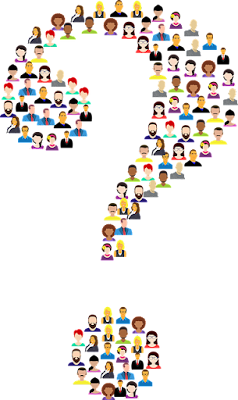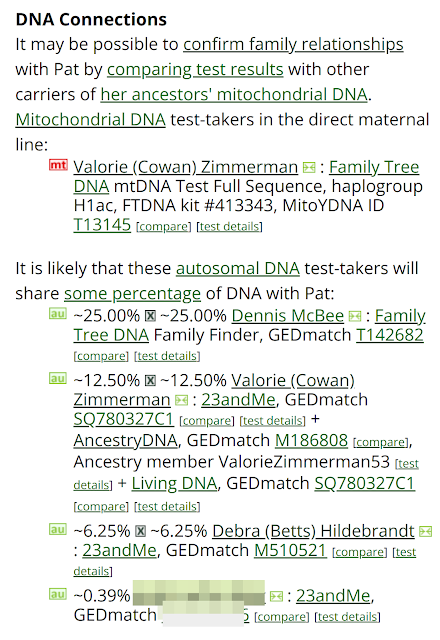The Shared CM Project Tool 4.0

Courtesy of Pixabay Mystery Match - What To Do Next You've checked your DNA results, possibly at a new test company, and you find an unfamiliar match sharing a large segment of DNA. While some of the companies assign a relationship, "1C,2R", that may not be accurate due to variables such as "half" siblings or cousins. There are several tools available to help calculate relationships; one we have seen in presentations and online is the Shared cM Project 4.0 Tool v4. https://dnapainter.com/tools/sharedcmv4 You can locate yourself in the white square marked "Self" just off the center. Relationships that share, or are descendants of one or both of your parents are in light or blue gray. Relationships with which the most recent common ancestor (MRCA) is one or both grandparents are in green, great-grandparents are in orange. The numbers in the squares represent the average shared cMs for that relationship as well as the low and high range. Notice that ...





